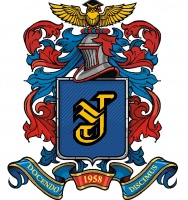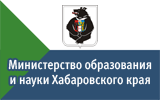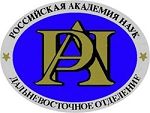Дальневосточный математический журнал
Численная реализация лагранжевой формулировки определяющих соотношений изотропного гиперупругого материала Генки |
С.Н. Коробейников, А.А. Олейников, А.Ю. Ларичкин, А.В. Бабичев, В. В. Алёхин |
2013, выпуск 2, С. 222-249 |
Аннотация |
| Лагранжева формулировка определяющих соотношений изотропного гиперупругого материала Генки реализована в пакете MSC.Marc. Достоверность реализации подтверждается сравнением численных решений, полученных с использованием пакета MSC.Marc, с точными решениями трехмерных задач о простом сдвиге и об одноосном растяжении стержня из материала Генки. Получены новые решения задачи о возникновении шейки и послекритическом деформировании стержня при его растяжении заданным перемещением торца. |
Ключевые слова: изотропная гиперупругость, материал Генки, метод конечных элементов, пакет MSC.Marc |
Полный текст статьи (файл PDF) |
Библиографический список |
| [1] L. Anand, “On Hencky’s approximate strain-energy function for moderate deformations”, Trans. ASME, J. Appl. Mech., 46:1 (1979), 78–82. [2] L. Anand, “Moderate deformations in extension-torsion of incompressible isotropic elastic materials”, J. Mech. Phys. Solids., 34 (1986), 293–304. [3] K.-J. Bathe, Finite Element Procedures, Prentice Hall, Upper Saddle River, N.J., 1996. [4] J. Bonet, R. D. Wood, Nonlinear Continuum Mechanics for Finite Element Analysis, Cambridge Univ. Press, Cambridge, 1997. [5] R. Brown, Physical Testing of Rubber (4th ed.), Springer, N.Y., 2006. [6] A. Curnier, L. Rakotomanana, “Generalized strain and stress measures: critical survey and new results”, Eng. Trans., 39:3–4 (1991), 461–538. [7] A. Curnier, Computational Methods in Solid Mechanics, Kluwer Academic Publ., Dordrecht, 1994. [8] H. Darijani, R. Naghdabadi, “Hyperelastic materials behavior modeling using consistent strain energy density functions”, Acta Mech., 213 (2010), 235–254. [9] H. Darijani, R. Naghdabadi, “Constitutive modeling of solids at finite deformation using a second-order stress-strain relation”, Int. J. Engng Sci., 48 (2010), 223–236. [10] R. Hill, “On uniqueness and stability in the theory of finite elastic strain”, J. Mech. Phys. Solids., 5:4 (1957), 229–241. [11] R. Hill, “A general theory of uniqueness and stability in elastic-plastic solids”, J. Mech.Phys. Solids., 6:3 (1958), 236–249. [12] R. Hill, “Some basic principles in the mechanics of solids without a natural time”, J. Mech. Phys. Solids., 7:3 (1959), 209–225. [13] R. Hill, “On constitutive inequalities for simple materials — I”, J. Mech. Phys. Solids., 16:4 (1968), 229–242. [14] R. Hill, “Aspects of invariance in solid mechanics”, Advances in Applied Mechanics, 18, Academic Press, New York, 1978, 1–75. [15] G. A. Holzapfel, Nonlinear Solid Mechanics: A Continuum Approach for Egineering, Wiley, Chichester et al., 2000. [16] T. J. R. Hughes, The Finite Element Method: Linear Static and Dynamic Finite Element Analysis, Prentice-Hall, Englewood Cliffs, 1987. [17] M. Kleiber, Incremental Finite Element Modelling in Non-linear Solid Mechanics, Ellis Horwood, Chichester, 1989. [18] С. Н. Коробейников, “Применение метода конечных элементов к решению нелинейных задач по деформированию и потере устойчивости атомных решеток”, Препринт РАН. Сиб. отд-ние. Институт гидродинамики; № 1-97, Новосибирск, 1997. [19] С. Н. Коробейников, Нелинейное деформирование твердых тел, Из-во СО РАН, Новосибирск, 2000. [20] С. Н. Коробейников, “Строго сопряженные тензоры напряжений и деформаций”, ПМТФ, 41:3 (2000), 149–154. [21] С. Н. Коробейников, “Численное решение уравнений с особенностями деформирования упругопластических оболочек вращения”, Вычислительные технологии, 6:5 (2001), 39–59. [22] S. N. Korobeinikov, “The numerical solution of nonlinear problems on deformation and buckling of atomic lattices”, Int. J. Fracture, 128 (2004), 315–323. [23] S. N. Korobeynikov, “Objective tensor rates and applications in formulation of hyperelastic relations”, J. Elast., 93 (2008), 105–140. [24] S. N. Korobeynikov, “Families of continuous spin tensors and applications in continuum mechanics”, Acta Mech., 216:1-4 (2011), 301–332. [25] С. Н. Коробейников, А. А. Олейников, “Лагранжева формулировка определяющих соотношений гиперупругого материала Генки”, Дальневосточный математический журнал, 11:2 (2011), 155–180. [26] MARC Users Guide. V. A: Theory and Users Information, MSC. Software Corporation, Santa Ana (CA), 2010. [27] MARC Users Guide. V. B: Element Library, MSC. Software Corporation, Santa Ana (CA), 2010. [28] MARC Users Guide. V. D: User Subroutines and Special Routines, MSC. Software Corporation, Santa Ana (CA), 2010. [29] R. W. Ogden, Non-linear Elastic Deformations, Ellis Horwood, Chichester, 1984. [30] J. Plesek, A. Kruisova, “Formulation, validation and numerical procedures for Hencky’s elasticity model”, Computers and Structures, 84 (2006), 1141–1150. [31] В. И. Шалашилин, Е. Б. Кузнецов, Метод продолжения решения по параметру и наилучшая параметризация, URSS, М., 1999. [32] Г. Стренг, Дж. Фикс, Теория метода конечных элементов, Мир, М., 1977. [33] J. M. T. Thompson, “Bifurcational instability of an atomic lattice”, Instabilities and Catastrophes in Science and Engineering, Ed. by J.M.T. Thompson, Wiley: Chichester et al., 1982, 101–124. [34] C. Truesdell, W. Noll, The Non-linear Field Theories of Mechanics. V. III/3: Handbuch der Physik, ed. S. FlЁugge, Springer, New York, 1965. [35] V. Tvergaard, A. Needleman, “On the development of localized buckling patterns”,Collapse: the Buckling of Structures in Theory and Practice: Proc. Int. Symp., Eds: J.M.T. Thompson, G.W. Hunt, Cambridge: Cambridge Univ. Press, 1983, 11–24. [36] К. Васидзу, Вариационные методы в теории упругости и пластичности, Мир, М., 1987. [37] H. Xiao, O. T. Bruhns, A. Meyers, “Logarithmic strain, logarithmic spin and logarithmic rate”, Acta Mech., 124 (1997), 89–105. [38] H. Xiao, O. T. Bruhns, A. Meyers, “Hypo-elasticity model based upon the logarithmic stress rate”, J. Elast., 47 (1997), 51–68. [39] O. C. Zienkiewicz, R. L. Taylor, The Finite Element Method (4th ed.), Butterworth-Heinemann, Oxford, 2000. |






